Understanding Orthodontic Choices for Families
Deciding on the best orthodontic treatment for your family can be challenging, especially with options ranging from traditional braces to advanced clear aligners like Invisalign. Each treatment type offers unique benefits and considerations tailored to different ages, dental needs, and lifestyles. This guide breaks down key orthodontic options, helping families understand what is available and how to choose the right path for each member’s smile journey.
Key Facts List: Orthodontic Treatments (Braces vs Invisalign)
- Traditional braces include metal, ceramic, and lingual types, suitable for severe dental issues across all ages.
- Braces are highly effective in treating complex cases, providing precise control over tooth and bite correction.
- Invisalign uses a series of customized, clear aligners for mild to moderate dental corrections, suitable for teens and adults.
- Treatment duration averages 18-36 months for braces and 12-18 months for Invisalign, influenced by case complexity.
- Cost ranges from $3,000 to $8,000 for both options, with costs affected by treatment complexity and location.
- Braces are fixed appliances, requiring diligent oral hygiene and dietary restrictions, while Invisalign aligners are removable.
- Braces are preferred for severe malocclusions; Invisalign is generally recommended for mild to moderate issues.
- Success rates are approximately 88% for Invisalign and 90% for braces, depending on case selection and patient compliance.
- Invisalign boasts benefits such as discreet aesthetics, comfort, and fewer orthodontist visits.
- Choosing the best treatment depends on dental needs, lifestyle preferences, and professional advice from an orthodontist.
1. Traditional Braces: Proven Effectiveness for All Ages
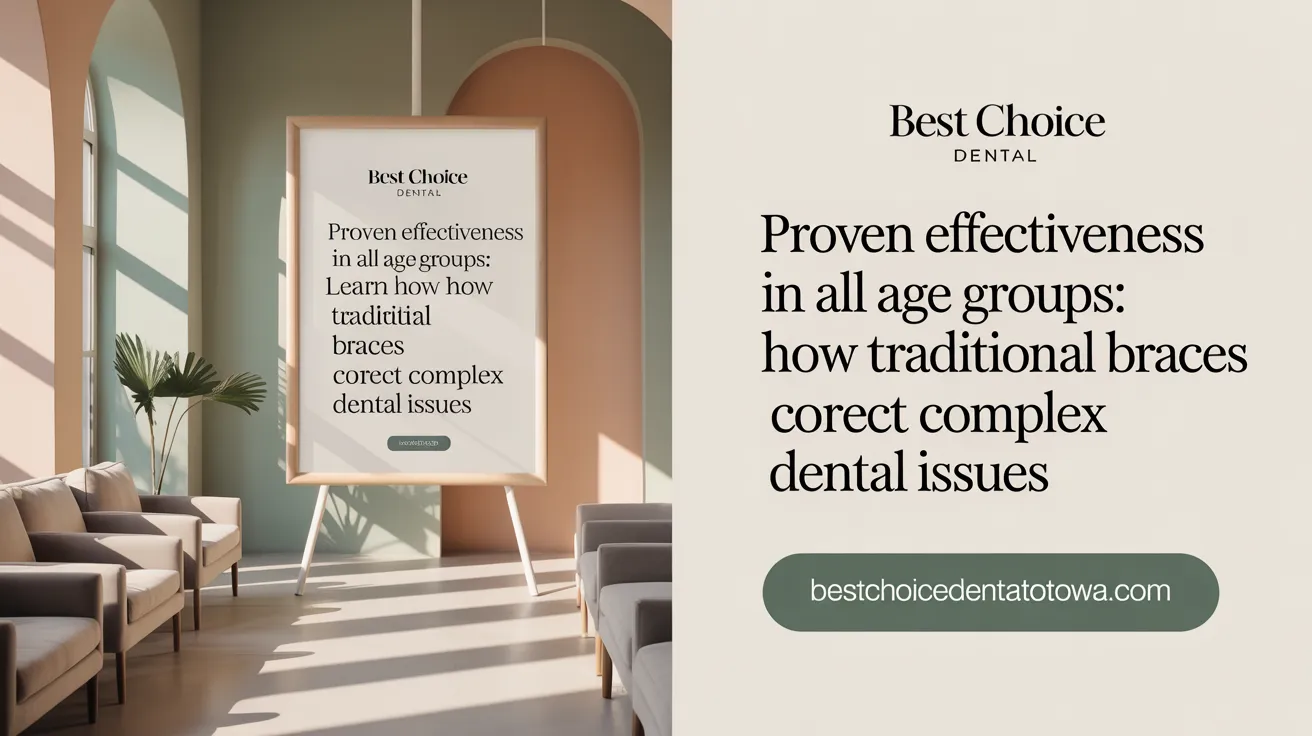
What types of orthodontic treatments are generally available for families, and what benefits do they offer?
Traditional braces come in several types, including metal braces, ceramic braces, and lingual braces. Each type uses brackets bonded to the teeth connected by archwires, which apply constant pressure to shift teeth into proper alignment.
Metal braces are the most common, durable, and effective for severe dental issues. Ceramic braces are similar but use tooth-colored or clear brackets, making them less noticeable. Lingual braces are placed on the inside of the teeth, offering a discreet option.
These braces are highly effective for correcting complex dental problems such as severe crowding, misalignment, gaps, overbites, and underbites. They can treat all age groups, from children to adults, due to their ability to exert strong and precise forces.
Effectiveness in treating complex dental issues
Traditional braces excel in managing complicated cases where precise control over tooth movement is necessary. They can adjust tooth rotation, vertical positioning, and bite problems effectively. Due to their fixed nature, they provide continuous and consistent force, which often results in more predictable outcomes. Learn more about the effectiveness of traditional braces.
Suitability for children, teens, and adults
Braces are suitable for all ages because their design and treatment implementation can be tailored to individual needs. Children typically benefit from early intervention, especially around ages 9 to 14 when jaw growth is ongoing. Teenagers and adults with moderate to severe misalignments can also undergo treatment, with adult cases sometimes taking longer due to denser bone structure. For more on age and orthodontic treatment, see orthodontic options for all ages.
Treatment process and treatment duration
The treatment involves initial consultation, X-rays, and impressions to plan the correction strategy. Braces are bonded to the teeth, and adjustments are made at regular intervals, usually every 4 to 6 weeks.
Average treatment duration is between 18 to 36 months, depending on the severity of the condition. Mild cases may be resolved in less than a year, while complex cases could extend beyond three years. Treatment times vary by case complexity, see braces treatment duration details.
Advantages and disadvantages of traditional braces
Advantages:
- Highly effective for diverse and severe dental cases.
- Achieve precise tooth movements and bite corrections.
- Customizable with options like colored elastics or ceramic brackets.
- Often less costly initially compared to newer, discreet options.
Disadvantages:
- Noticeable appearance of metal brackets and wires.
- Dietary restrictions to prevent damage: hard, sticky, or chewy foods should be avoided.
- Increased challenge in maintaining oral hygiene, requiring diligent cleaning to prevent plaque buildup.
- Possible discomfort and irritation after adjustments.
Maintenance, oral hygiene, and care requirements
Proper oral hygiene is essential during treatment. Patients should brush after every meal, floss daily using special tools if necessary, and avoid foods that can stain or damage brackets and wires. Regular dental check-ups are crucial to monitor progress and replace any damaged components. Additionally, wearing a retainer after treatment helps maintain the results and prevents relapse. Learn about oral hygiene with braces and the importance of post-treatment retainers.
2. Invisalign: A Modern, Discreet Option for Mild to Moderate Cases
How Invisalign works using clear removable aligners
Invisalign employs a series of customized, transparent plastic trays called aligners, which are designed to gradually shift teeth into proper alignment. These aligners are created through advanced 3D imaging, allowing for precise planning and personalized treatment. Patients wear each set of aligners typically for one to two weeks, applying gentle pressure. Since they are removable, they can be taken out during meals and brushing, vastly improving oral hygiene and diet freedom.
Suitability for children (Invisalign First), teens, and adults
Invisalign offers versatile treatment options suitable for a broad age range. Invisalign First is tailored specifically for children as young as six years old, addressing developing jaws and preventing future misalignments. For teens, Invisalign aligners are nearly invisible, discreet, and include features like blue compliance dots that help parents monitor wear time. Adults of any age are excellent candidates, especially those who value aesthetics and comfort, with treatment effective in resolving various dental concerns (Invisalign for adults).
Advantages such as aesthetics and convenience
The primary appeal of Invisalign lies in its discreet appearance; the aligners are nearly invisible, making them attractive for individuals worried about metal braces affecting their looks (Benefits of Invisalign). Removability offers unmatched convenience for eating, drinking, brushing, and flossing, promoting better oral health. The smooth, BPA-free plastic minimizes mouth irritation, and the treatment often involves fewer visits to the orthodontist compared to traditional braces (reduced orthodontist visits). Many patients report feeling more confident during treatment because they can maintain their natural smile without noticeable braces.
Limitations regarding complex cases and patient compliance
While Invisalign is effective for mild to moderate orthodontic issues like gaps, crowding, overbites, underbites, and crossbites, it has limitations with severe corrections requiring significant tooth movement or bite adjustments (Limitations of Invisalign). Success heavily depends on patient compliance; aligners must be worn 20-22 hours daily (Patient discipline for Invisalign). Failure to adhere to this schedule can delay progress or compromise the final outcome. Invisalign users also need to remove aligners for eating and drinking, which can be inconvenient and requires discipline.
Treatment duration and cost compared to braces
Typically, Invisalign treatment lasts around 12 to 18 months, shorter than or comparable to traditional braces depending on case complexity (Treatment duration comparison). The cost usually ranges from $3,000 to $5,000, similar to traditional braces, although some complex cases may incur higher expenses if additional treatments are necessary (Cost comparison Invisalign vs braces). Insurance coverage may help offset costs, and flexible payment plans are often available.
Care routines and lifestyle considerations
Caring for Invisalign aligners involves rinsing and brushing them gently to prevent staining and buildup (Invisalign care and maintenance). Aligners should be stored in their protective case when not in use. Since aligners are removable, patients can enjoy their favorite foods without restrictions but should be diligent to wear the aligners consistently. This flexibility makes Invisalign ideal for athletes and professionals who want a less conspicuous and more comfortable orthodontic experience, provided they stay committed to the treatment plan.
Main Differences Between Invisalign and Traditional Braces
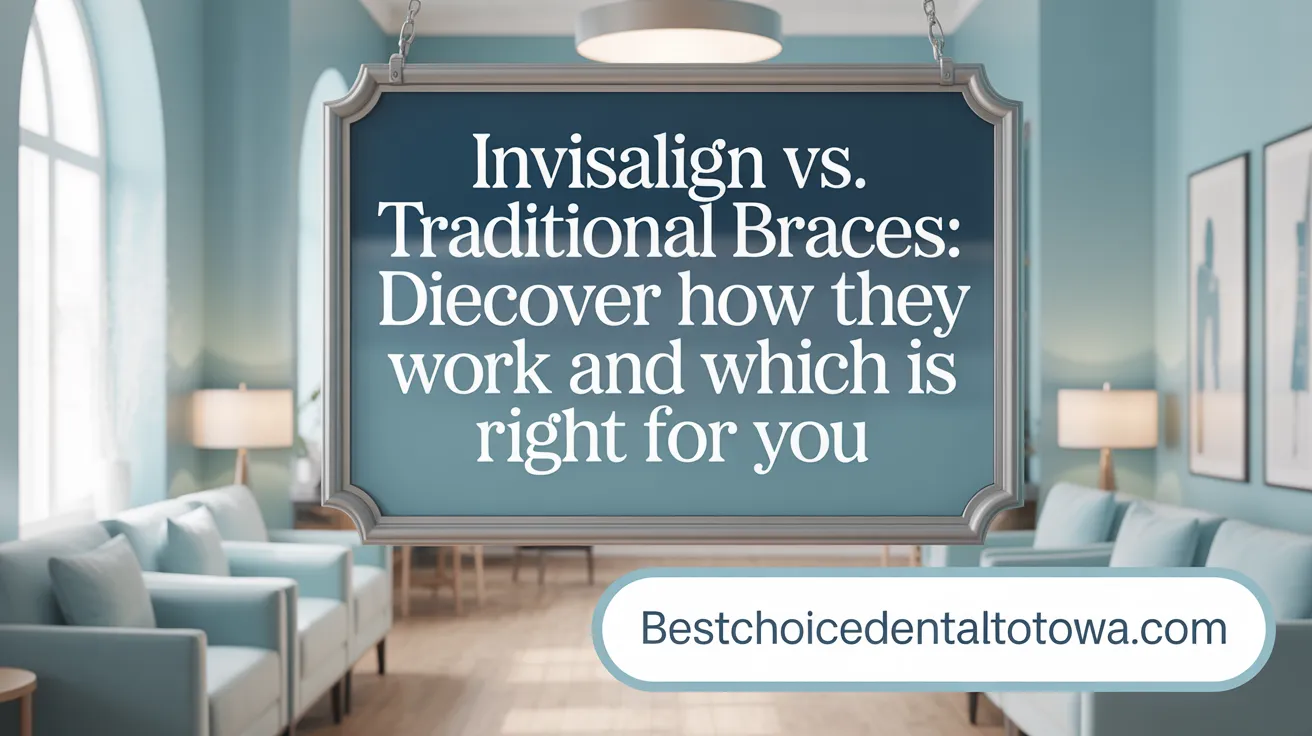
How Invisalign and braces work
Invisalign uses a series of custom-made, clear plastic aligners that are designed to be removable and nearly invisible. These aligners apply gentle, controlled forces to teeth, gradually moving them into proper alignment over time. Patients switch to a new set of aligners approximately every two weeks, and the treatment can address issues like crowding, spacing, and some bite problems.
Traditional braces, on the other hand, consist of metal brackets bonded to each tooth and connected by wires. The orthodontist adjusts these wires periodically to exert continuous pressure, which moves teeth into the desired position. Braces are highly effective for complex orthodontic corrections, including significant misalignments and bite issues.
Treatment processes
The Invisalign process begins with a digital scan or impressions of your mouth, leading to a precise 3D computer model of your teeth. A series of aligners is then fabricated, and your treatment plan is mapped out to gradually adjust your teeth. Throughout treatment, you'll visit your orthodontist less frequently—typically every 6-8 weeks—for check-ups and new aligners.
Traditional braces require more frequent visits—usually once a month—for adjustments, wire changes, and inspections. The orthodontist bonds brackets to your teeth and threads wires through them. Regular appointments are necessary for tightening and progress assessment.
Differences in application and maintenance
Invisalign aligners are removed during meals, snacks, and oral hygiene routines, making daily cleaning and eating more convenient. They require disciplined wear of 20-22 hours daily; any less can extend treatment time or reduce effectiveness.
Traditional braces are fixed to teeth and must be maintained with special cleaning tools, such as interdental brushes and floss threaders, to prevent plaque buildup and decay. Dietary restrictions are common to avoid damaging brackets or wires.
Suitability based on complexity and lifestyle
Invisalign is well-suited for mild to moderate orthodontic issues and patients who prefer a discreet, flexible solution. It requires commitment and discipline to wear aligners consistently, making it less ideal for very severe cases.
Braces are preferred for complex malocclusions, such as severe crowding, rotations, or bite problems, where precise control over tooth movement is necessary. They are also a better option for younger patients who might struggle with the discipline required for Invisalign.
Both options have their strengths, but the choice should be made based on the severity of the dental issue, lifestyle preferences, and in consultation with an orthodontist.
Advantages and Disadvantages of Invisalign vs. Traditional Braces
What are the advantages and disadvantages of Invisalign compared to traditional braces?
Invisalign provides a discreet, aesthetically appealing option because its aligners are made of clear, plastic material that almost becomes invisible when worn. Patients often find Invisalign more comfortable due to its smooth surface and lack of brackets and wires, which can cause irritation or mouth sores. Additionally, because aligners are removable, maintaining oral hygiene is easier, with no need to avoid certain foods or change eating habits. Treatment involves fewer in-office visits since most adjustments happen through changes in aligners at home, and patients can enjoy a more convenient lifestyle.
However, Invisalign has its limitations. It tends to be less effective for very complex dental issues, such as severe misalignments or large gaps, due to its reliance on patient compliance and the limitations of plastic appliances in applying force. Achieving precise or faster results in complicated cases may be difficult with Invisalign. Additionally, the cost can be higher than traditional braces, especially if the case requires multiple refinements or combined treatment methods.
Traditional braces , on the other hand, are highly effective for a wide array of orthodontic problems, including severe crowding, rotations, and bite issues. Since they are fixed appliances, they do not depend on patient discipline to maintain consistent wear, often making them more suitable for complex cases. They provide orthodontists with greater control over tooth movement, which can result in more precise and sometimes quicker outcomes.
Conversely, metal or ceramic brackets and wires are more noticeable, which can be a concern for aesthetic reasons. Braces can cause discomfort from the hardware, particularly after adjustments, and they require diligent oral hygiene to prevent plaque buildup, as food particles may get trapped around brackets and wires. Dietary restrictions are also necessary to avoid damaging the appliances.
In summary, the choice between Invisalign and traditional braces depends on the complexity of dental issues, aesthetic preferences, lifestyle, and the willingness to comply with treatment protocols. Consulting with an orthodontic professional can help determine the best option tailored to individual needs.
Effectiveness and Success Rates of Invisalign and Braces
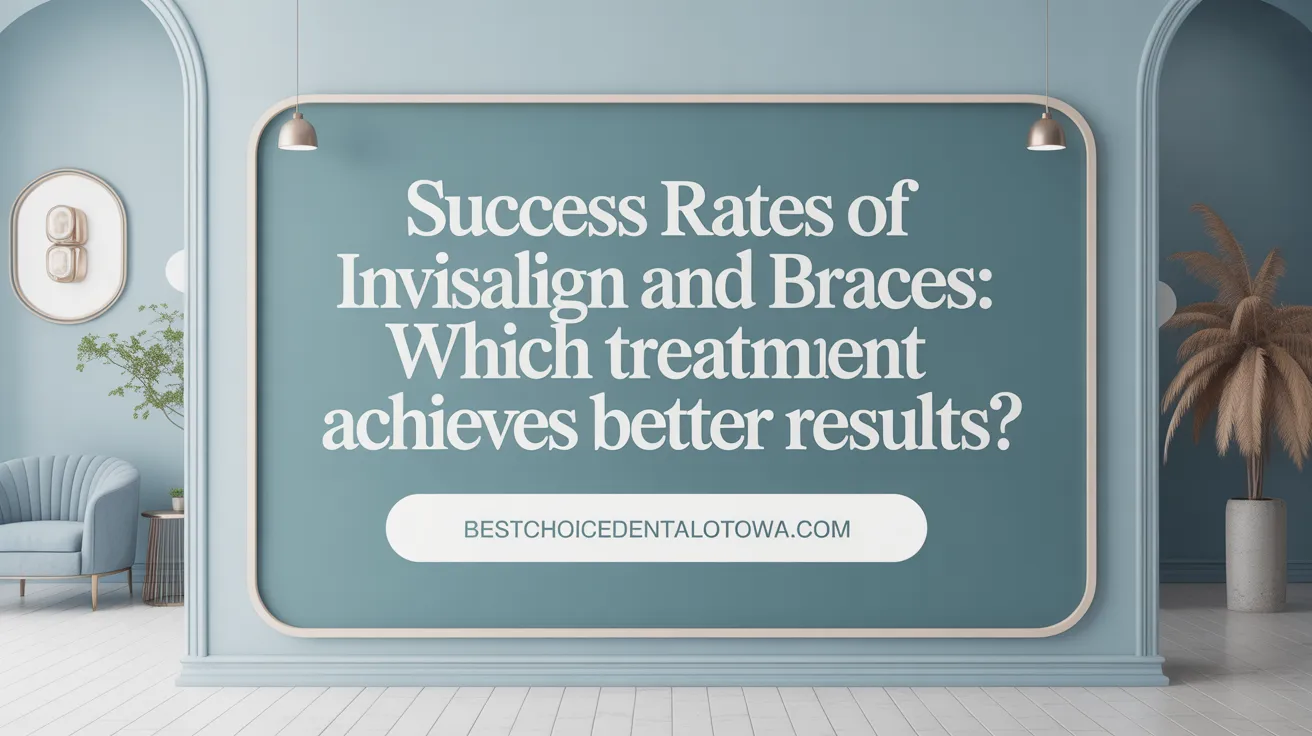
How do the effectiveness and success rates of Invisalign compare to traditional braces?
Both Invisalign clear aligners and traditional metal braces are highly successful orthodontic treatments when used appropriately. Research indicates success rates of approximately 88% for Invisalign and about 90% for traditional braces, assuming proper case selection and full patient compliance.
Invisalign clear aligners are generally more suited for mild to moderate dental corrections, such as minor crowding, spacing issues, and certain bite problems. Its shorter average treatment time—around 18 months—makes it a popular choice for those with less severe malocclusions.
Traditional braces are, on the other hand, better equipped to handle complex orthodontic cases. They can effectively correct severe misalignments, rotations, vertical discrepancies, and bite issues like overbites or underbites. Typical treatment durations with braces are around 24 months.
Long-term stability resulting from both treatments is comparable, with relapse rates hovering around 10-12%. This suggests that both options can provide durable results when combined with diligent retention post-treatment.
Overall, the success of either treatment hinges on patient selection—matching case complexity to the appropriate method—and on patient adherence to the prescribed regimen. Proper monitoring by an orthodontist enhances the likelihood of achieving optimal and lasting results.
Treatment Duration: Invisalign vs. Braces
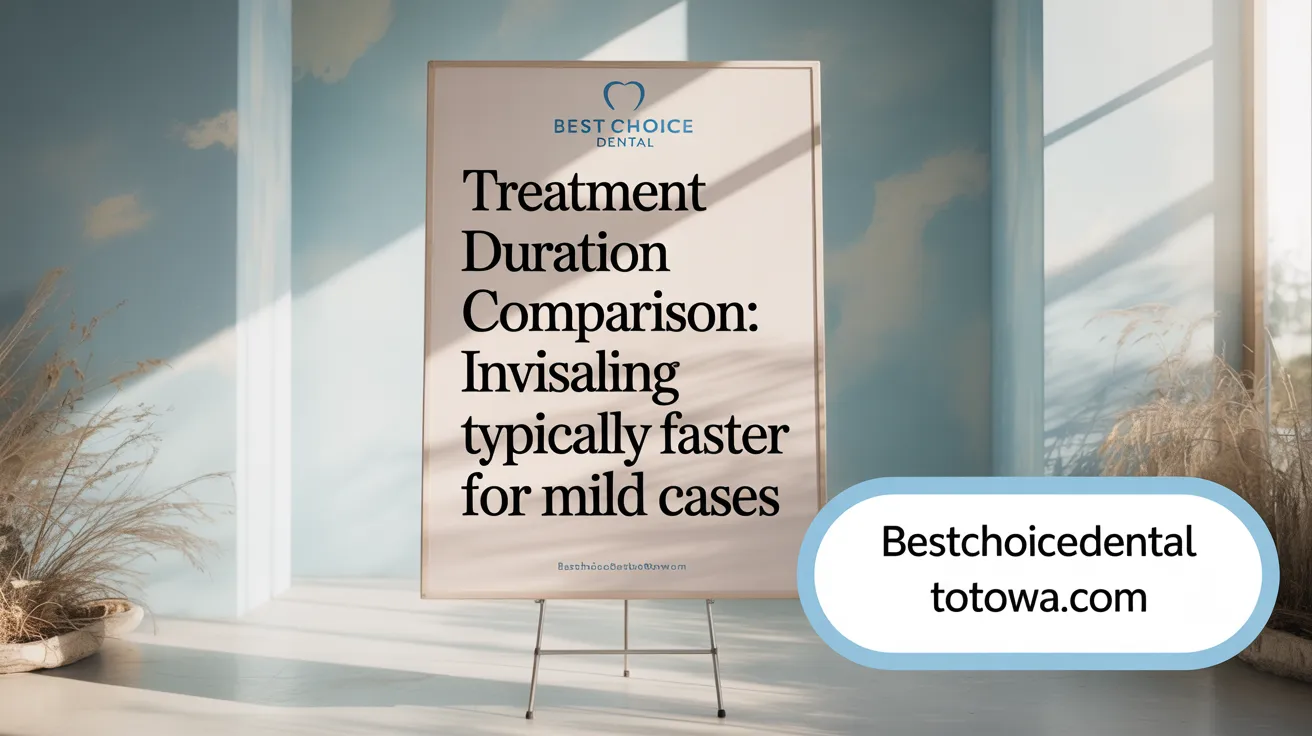
How does the treatment duration of Invisalign compare to that of traditional braces?
Invisalign treatment typically lasts from 12 to 18 months, making it generally faster than traditional braces, which often need 18 months to over three years to complete. Multiple studies highlight that Invisalign can be about five months quicker, especially in mild to moderate cases. Severe orthodontic issues, such as significant crowding or bite problems, usually require the continued use of traditional braces that exert more force and provide more precise control (Invisalign vs traditional braces).
The length of treatment is influenced heavily by case complexity. Simpler cases tend to resolve more quickly with Invisalign, while complex corrections involving teeth rotation or jaw alignment may extend beyond 18 months. Patient discipline also plays a role; consistent wear of aligners for 20-22 hours daily is crucial for shorter, effective treatment (Invisalign wearing schedule).
Research indicates that while Invisalign can shave months off treatment time, its success for complex cases might still fall behind traditional braces, which can handle more detailed adjustments. Ultimately, the specific dental issues, along with individual adherence and treatment goals, determine the exact duration (Invisalign vs braces).
Cost Comparison: Invisalign vs. Traditional Braces
Typical cost ranges
The typical cost of Invisalign treatment generally falls between $3,500 and $8,000. For traditional braces, the cost ranges from about $3,000 to $7,500. While there is some overlap, Invisalign often tends to be at the higher end of the spectrum, especially for cases requiring many aligners or complex adjustments.
Factors influencing cost
Several factors influence the overall price of these orthodontic options. Case complexity is a primary driver: simpler cases may cost less, while complex misalignments requiring advanced features or longer treatment durations tend to be pricier. Additional location-based costs and the expertise of the orthodontist also impact pricing. Invisalign’s technology — especially the 3D scans, customization, and manufacturing of aligners — can lead to higher costs. Conversely, traditional braces might be less expensive but may involve additional expenses for specialized brackets or extended treatment times.
Insurance coverage
Both Invisalign and traditional braces are often partially covered by dental insurance plans. Many plans cover up to $3,000 of orthodontic treatment, but coverage varies widely based on the policy. Some insurers see Invisalign as comparable in value to braces, while others may restrict coverage depending on the case or provider negotiations. For more information, see dental insurance coverage for orthodontics.
Value considerations
When evaluating costs, it’s essential to consider the overall value. Invisalign offers advantages such as removability, less discomfort, fewer emergency visits, and better aesthetic appeal, which might justify a higher price for many patients. Traditional braces, while sometimes more affordable, may provide better control for complex cases or severe misalignments, potentially resulting in more effective treatment.
In summary, both options are similar in price for many cases, but individual circumstances—like treatment complexity, lifestyle needs, and insurance coverage—play significant roles. Careful consultation with an orthodontist can help determine the most cost-effective and suitable choice for each patient.
Age Appropriateness of Invisalign and Braces
Invisalign and traditional braces cater to different age groups based on dental development, treatment complexity, and lifestyle factors.
Invisalign is most suitable for teenagers and adults once most of the permanent teeth have erupted. It offers advantages like removability, comfort, and discreet appearance, making it an attractive choice for professionals and self-conscious teens. There are also specialized options like Invisalign Teen, which includes features such as blue dots to monitor wear time and accommodate erupting molars. The typical treatment duration ranges from about 6 to 18 months, depending on individual cases.
For young children, especially those under age 12, traditional braces tend to be more effective. This is because braces are fixed appliances that exert continuous force on teeth, which is crucial during early growth phases. Braces can address complex issues like severe crowding, large gaps, and bite problems that require precise control. Fixed appliances do not depend on the child's responsibility to remove or wear them consistently, ensuring steady progress.
Special Invisalign options like Invisalign First™ are designed for children as young as six years old to guide jaw development and create space for emerging teeth. This approach helps in early intervention, potentially reducing more invasive treatments later.
A significant consideration in choosing between Invisalign and braces for children is compliance. Invisalign demands strict discipline to wear aligners for at least 20-22 hours daily. Young children may struggle with this requirement, making traditional braces a more reliable and less maintenance-intensive option.
Overall, the decision hinges on the child's age, dental health, severity of dental issues, and the willingness to adhere to wearing protocols. Consulting with an orthodontist can help determine the best treatment suited for each stage of dental development.
Key Considerations When Choosing Between Invisalign and Braces
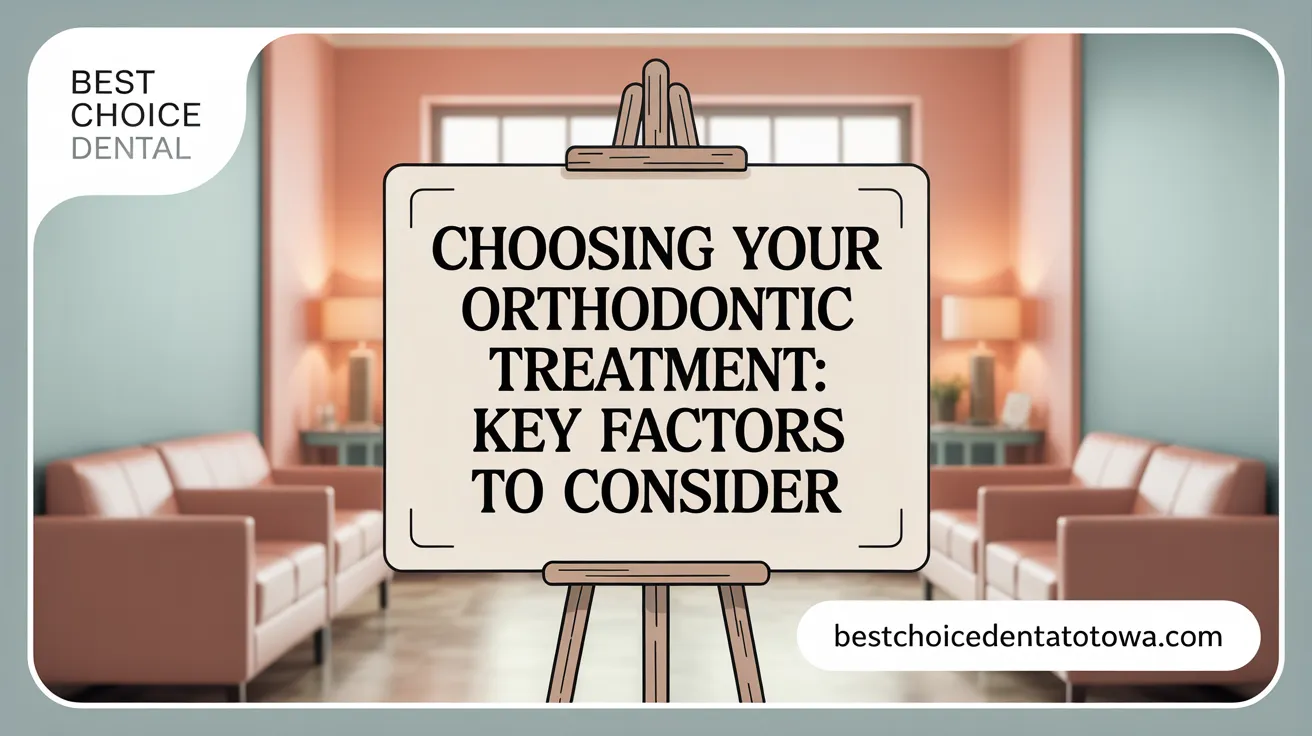
What are the common factors to consider when choosing between Invisalign clear aligners and traditional braces, such as comfort, appearance, care requirements, and lifestyle?
When deciding between Invisalign and braces, several important aspects can influence the right choice for each individual.
One of the main considerations is the complexity of the dental correction needed. Invisalign is generally most effective for mild to moderate issues like minor crowding, gaps, or bite concerns. For more severe or complicated cases, traditional braces tend to offer greater control and more precise tooth movement.
Invisalign provides a discreet and comfortable alternative; the aligners are made from smooth, BPA-free plastic that nearly vanishes when worn. This aesthetic appeal makes Invisalign especially popular among adults and teens who are concerned about appearance. The removable nature of aligners also makes oral hygiene easier since patients can brush and floss normally without brackets or wires.
Conversely, traditional braces are fixed appliances—metal brackets and wires—that are attached to the teeth. They are more visible and can cause some discomfort, especially during adjustments. However, they are highly effective for complex corrections and do not depend on the patient's discipline to wear them. Braces require diligent cleaning around brackets and wires, and dietary restrictions to avoid damaging the appliances.
Lifestyle aspects also play a key role. For active individuals or those involved in sports, removable Invisalign aligners help avoid injury risk and make maintaining oral health manageable. Patients with busy schedules or those who prefer fewer orthodontist visits may find Invisalign more convenient, as aligners are typically changed at home approximately every two weeks, with fewer check-ins (source).
Cost and treatment duration are additional factors—Invisalign often has comparable or slightly higher costs and may provide quicker results for simpler cases, typically taking about 12-18 months. Braces might take a bit longer but are chosen for their effectiveness in more complex situations (source).
Ultimately, the decision should be made in consultation with an orthodontist who can assess individual dental needs, lifestyle, and preferences. Thorough understanding of these considerations helps patients select the most suitable treatment, ensuring optimal results and satisfaction.
Medical Recommendations for Invisalign and Braces Based on Dental Needs
When are traditional braces and Invisalign recommended based on specific dental or orthodontic needs?
Traditional braces are often the best choice for complex dental issues, such as severe crowding, large gaps, misaligned bites like overbites and underbites, and cases requiring significant tooth movement or jaw correction. Their mechanical design allows for precise control over tooth and jaw positioning, making them highly effective in correcting severe malocclusions and complex cases. They are suitable across all ages, including adults, due to their flexibility and reliability.
Invisalign is generally recommended for mild to moderate orthodontic problems, including minor crowding, small gaps, and moderate bite issues like crossbites or overbites. Many teens and adults prefer Invisalign because of its discreet appearance, removable aligners, and the convenience of fewer in-office visits. However, Invisalign may not be suitable for severe cases or where significant forces are needed to move teeth or correct jaw misalignments.
Complexity and severity considerations
The decision between Invisalign and traditional braces often hinges on case complexity. While Invisalign excels in straightforward, mild cases with less rotation or vertical movement required, braces can handle more demanding corrections with greater accuracy. For intricate orthodontic maneuvers—such as significant rotations, vertical adjustments, or major bite corrections—braces typically deliver more predictable and faster results.
Treatment duration differences
Average treatment times reflect case severity. Invisalign treatments often last between 12 to 18 months, especially in mild to moderate cases, with shorter durations for simple corrections. On the other hand, traditional braces typically require 18 to 36 months, with longer durations for complex or severe cases. The speed of treatment can be influenced by case complexity, patient compliance, and the orthodontist’s technique.
Patient preferences and professional guidance
Choosing the right treatment involves considering personal preferences, lifestyle, and orthodontist recommendations. Patients who prioritize aesthetics and convenience may lean toward Invisalign, but must be disciplined in wearing aligners as prescribed. Those with severe orthodontic needs or who prefer a treatment with less dependence on daily discipline might opt for braces. Consulting a qualified orthodontist is essential to assess individual dental conditions, lifestyle, and goals, ensuring the chosen treatment maximizes effectiveness and satisfies patient expectations.
Making the Best Orthodontic Choice for Your Family
Selecting the ideal orthodontic treatment for your family involves weighing the complexity of dental issues, age, aesthetic preferences, lifestyle, and budget. Traditional braces remain the gold standard for complex cases across all ages, offering precise control and broad applicability. Invisalign provides a comfortable, nearly invisible option for mild to moderate orthodontic concerns, favored for its convenience and appearance especially among teens and adults. Consulting with a qualified orthodontist ensures a personalized assessment that accounts for individual needs and goals, ultimately leading to confident decisions for healthier, straighter smiles for every family member.
